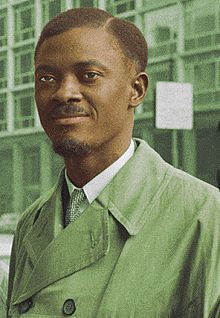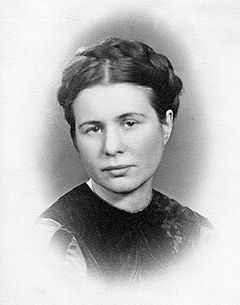Fighting for what you believe in
So, I've been reading up on a couple of people who changed the
course of history (most especially nationally -- within their own nation -- but
often internationally -- effects of what they did within their nation spilling out abroad). These were ordinary people -- men and women -- who
(may have been scared at some point in their lives but) did not let fear stop
them from fighting for what they believed in.
I have chosen just four people to discuss here,
but there are hundreds of these incredible individuals scattered all over this
world; dead and alive.
I should note here that I am not calling
these people saints who were incapable of doing wrong and
could not have been found guilty of any crime; what I write about these people
are facts I have come across from websites (e.g.: Wikipedia, Blackpast.org),
highlighting the factors that stood out the most to me about them.
1. António Agostinho Neto
 Neto was an Angolan man who lived from
1922 to 1979 and was the first president of Angola. He was also a renowned
poet. Neto fought for independence for his country from Portugal. He spent
seven years in prison in Lisbon (from 1951 to 1958) for taking part in the
separatist and revolutionary activities, and obviously had to put medical school on hold
for those years. He was president of the Popular Movement for Liberation
of Angola (MPLA). He was again arrested in 1960 for his political activities.
Angola achieved independence from Portugal in 1975 and Neto became Angola’s
ruler after the MLPA seized the capital of Luanda. Neto died during surgery for
cancer a few days before his 57th birthday.
Neto was an Angolan man who lived from
1922 to 1979 and was the first president of Angola. He was also a renowned
poet. Neto fought for independence for his country from Portugal. He spent
seven years in prison in Lisbon (from 1951 to 1958) for taking part in the
separatist and revolutionary activities, and obviously had to put medical school on hold
for those years. He was president of the Popular Movement for Liberation
of Angola (MPLA). He was again arrested in 1960 for his political activities.
Angola achieved independence from Portugal in 1975 and Neto became Angola’s
ruler after the MLPA seized the capital of Luanda. Neto died during surgery for
cancer a few days before his 57th birthday.
2. Gloria Hayes Richarson
 Richardson was an African-American woman who was born in 1922.
Richardson set up and led the Cambridge Non-violent Action Committee (CNAC) in
Maryland, USA during the Civil Rights Movement, which marched and protested
against segregation in the town. The CNAC’s scope was broad and addressed the
African-American unemployment rate (which was 40% due to segregation), housing
discrimination and inadequate healthcare for her people. Richardson
refused to commit to non-violent means of protests, so the protests led by the
CNAC were very confrontational and the national guards were often present. At
some point, the city of Maryland was under martial law for a year.
Richardson was an African-American woman who was born in 1922.
Richardson set up and led the Cambridge Non-violent Action Committee (CNAC) in
Maryland, USA during the Civil Rights Movement, which marched and protested
against segregation in the town. The CNAC’s scope was broad and addressed the
African-American unemployment rate (which was 40% due to segregation), housing
discrimination and inadequate healthcare for her people. Richardson
refused to commit to non-violent means of protests, so the protests led by the
CNAC were very confrontational and the national guards were often present. At
some point, the city of Maryland was under martial law for a year.
3. Patrice Lumumba
 Lumumba was a Congolese independence leader who lived from
1925 to 1961. Lumumba was the first democratically elected leader of the Congo
(the nation’s first prime minister). He was the founder of Movement National Congolais (MNC) and played an important role in campaigning
for independence from Belgium. Lumumba was arrested in October 1959 for
inciting anti-colonial riots and sentenced to 69 months in prison. Just 12 weeks after
Congo’s independence in 1960 and after assuming the office of the prime
minister, Lumumba was deposed in a coup and was killed by a firing squad by
Katagan opposition members, at the age of 35.
Lumumba was a Congolese independence leader who lived from
1925 to 1961. Lumumba was the first democratically elected leader of the Congo
(the nation’s first prime minister). He was the founder of Movement National Congolais (MNC) and played an important role in campaigning
for independence from Belgium. Lumumba was arrested in October 1959 for
inciting anti-colonial riots and sentenced to 69 months in prison. Just 12 weeks after
Congo’s independence in 1960 and after assuming the office of the prime
minister, Lumumba was deposed in a coup and was killed by a firing squad by
Katagan opposition members, at the age of 35.
4. Irena Sendler
 Sendler was a Polish nurse and social worker who lived from 1910 to 2008. Sendler served in the Polish Underground (the Polish Council to
Aid Jews, also known as Żegota) during World War II. Sendler was the head of
the children’s division of Żegota and helped smuggle 2,500 Jewish children out
of Nazi-occupied Poland (specifically the Warsaw ghetto), saving them from the Holocaust. Żegota
forged false identity documents for the children and placed them with Polish
families and orphanages. Her non de guerre was ‘Jolanta’ and, along with about
30 other Żegota volunteers, who were mainly women, they smuggled babies and
small children out of the Warsaw ghetto in ambulances, trams, suitcases and
parcels under the guise of carrying out sanitation checks to prevent the spread
of typhus. In October 1941, it was established by the Nazi government that
helping Jews escape was punishable by death. The Gestapo arrested Sendler and tortured
her; beating her brutally and fracturing her feet and legs. Sendler never gave away information on her comrades or the children they had helped escape. Although
sentenced to death, Sendler managed to escape execution and returned to work
with Żegota under a fake name. She died at the age of 98 in Poland.
Sendler was a Polish nurse and social worker who lived from 1910 to 2008. Sendler served in the Polish Underground (the Polish Council to
Aid Jews, also known as Żegota) during World War II. Sendler was the head of
the children’s division of Żegota and helped smuggle 2,500 Jewish children out
of Nazi-occupied Poland (specifically the Warsaw ghetto), saving them from the Holocaust. Żegota
forged false identity documents for the children and placed them with Polish
families and orphanages. Her non de guerre was ‘Jolanta’ and, along with about
30 other Żegota volunteers, who were mainly women, they smuggled babies and
small children out of the Warsaw ghetto in ambulances, trams, suitcases and
parcels under the guise of carrying out sanitation checks to prevent the spread
of typhus. In October 1941, it was established by the Nazi government that
helping Jews escape was punishable by death. The Gestapo arrested Sendler and tortured
her; beating her brutally and fracturing her feet and legs. Sendler never gave away information on her comrades or the children they had helped escape. Although
sentenced to death, Sendler managed to escape execution and returned to work
with Żegota under a fake name. She died at the age of 98 in Poland.
There are several other courageous people like Neto, Richardson,
Lumumba and Sendler:
Harriet Tubman was an African American slavery abolitionist
who provided safe passage to freedom in Canada and free American states for
over 70 escaped slaves – her story is an extraordinary one of bravery and heroism.
Che Guevara was an Argentine-Cuban revolutionary who, with
Fidel Castro, overthrew a corrupt regime and worked hard to implement social
equality in a new Cuba – Guevara is probably the bravest man (albeit noted to have been
very cruel) to come out of South America, his face having become a symbol of
revolution and freedom.
All these people fought forces that were higher and larger than
they were – poverty, oppression, injustice – and they did so fearlessly,
propelled by the reward of freedom that lay on the other side of the rough journey,
unfazed by the risk of death.
I’ll end with a quote by Guevara, his parting words to his
children:
“Above all, always be capable of feeling
deeply any injustice committed against anyone, anywhere in the world. This is
the most beautiful quality in a revolutionary.”
Comments
Post a Comment